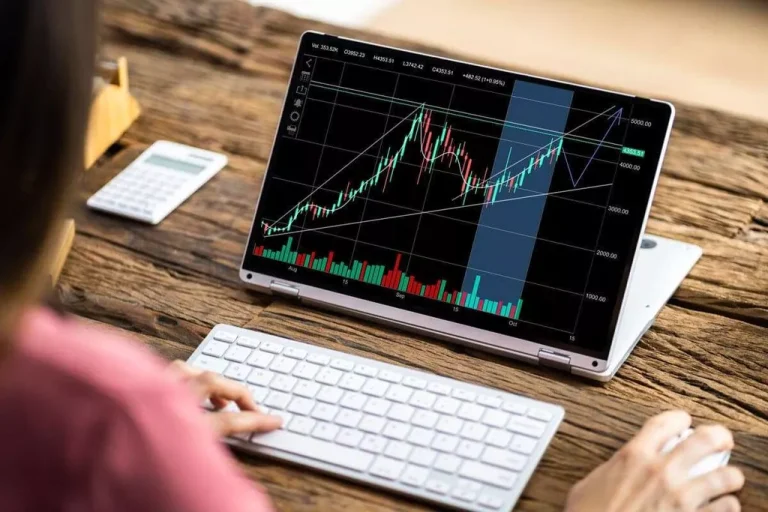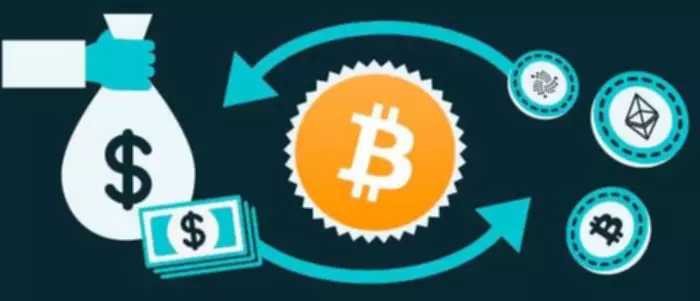Content
The origin of this myth is hard to determine, but it is important to understand that like every other trading venue, dark pools need liquidity providers to keep transactions moving at a competitive speed. Many dark pool operators invite electronic market makers (EMMs, often referred to in the media as ‘HFT’ firms) to provide liquidity on their dark pools. EMMs are also invited to provide liquidity on regulated exchanges and MTFs (lit markets). The primary reason these venues were created was to help institutional investors execute large trades more cost-effectively. As they tend to have very large https://www.xcritical.com/ order sizes, institutional investors trading on the lit markets could have a market impact (move the price considerably), which is undesirable for the investor. Before executing a trade on a lit market, investors will often check to see whether there’s liquidity on dark pools, where the restricted price information allows them to execute these orders with less price impact.
3 The challenges faced by the new regulatory package
The purpose is to avoid affecting the market when these large block orders are placed. This allows them to make trades without having to explain their rationale as they look for buyers or sellers. Utilizing a dark pool and conducting a dark trade, institutional investors can sell what is a dark pool a million shares of a stock without the public finding out because dark pool participants don’t disclose their trades to participants on the exchange.
Understanding the History of Dark Pools
- IG International Limited is licensed to conduct investment business and digital asset business by the Bermuda Monetary Authority.
- (2017), “The October 2016 sterling flash episode – when liquidity disappeared from one of the world’s most liquid markets”, Bank of England Staff Working Paper No 687.
- In addition, this research can assist policymakers in designing effective financial market regulation.
- Best execution requires that orders be executed on the most favorable terms reasonably available, with prompt execution, settlement of any order size and efficient consideration of all other transaction costs (Benvegna, 2017).
In this respect, Prime Brokerage Dark Pools offer anonymity, allowing them to execute even their largest trades without disrupting the market. Our services and education products provide information from Jon Najarian, Pete Najarian and our team of analysts and educators on trading options and securities as well as cryptocurrencies, tokens and coins (together “Digital Assets”). All investments involve risk, and the past performance of a security, Digital Asset, industry, sector, market, financial product, trading strategy, or individual’s trading does not guarantee future results or returns. The same risk exists when buying large blocks of a given security on a public market, as the purchase itself can attract attention and drive up the price. Since then, the number of dark pools has significantly grown and at this point, there are more than 40 in operation in the United States alone as of August 31, 2021. Ironically, dark pools were initially presented as a way to avoid front-running.
How can you use dark pools to trade without impacting the market?

According to the CFA Institute, non-exchange trading has recently become more popular in the U.S. Estimates show that it accounted for approximately 40% of all U.S. stock trades in 2017 compared with roughly 16% in 2010. The CFA also estimates that dark pools are responsible for 15% of U.S. volume as of 2014. While all dark pools share the common factor of secrecy, they all have different frameworks of rules and conditions. This adds to the difficulty of spotting the trades, as there is no set-in-stone fingerprint for a dark-pool trade.
Why Do Investors Trade on Dark Pools?
The larger the blocks you sell, the more selling pressure you create, which in turn drives down the price of the security, and reduces your potential gains. In any case, the sale would likely impact not only you, but the price of the stock itself. Selling all those shares could impact the price they get, driving down the VWAP (volume weighted average price) of the total sale.
Dark pools are private exchanges for trading securities that are not accessible to the investing public. Also known as dark pools of liquidity, the name of these exchanges is a reference to their complete lack of transparency. Dark pools are networks – usually private exchanges or forums – that allow institutional investors to buy or sell large amounts of stock without the details of the trade being released to the wider market. Because the buyers and sellers in a dark pool are other institutional traders, a fund manager looking to sell a million shares of a given stock is more likely to find buyers who are in the market for a million shares or more. On a public exchange, that million-share sale will likely need to be broken up into dozens, if not hundreds of trades.
However, there are concerns about the continuous growth in the popularity of SIs, closely following the trend set by dark pools, indicating the need for additional rules to be implemented. Regulators are sufficiently uneasy with the possibility that large volumes may mitigate to SIs, which would necessitate rewriting the rules. Whether investors will redirect their trading activities to conventional exchanges, as intended by the new regulations, or if new infrastructure will emerge in the market to bypass the barriers imposed by MiFID II, remains uncertain. With the removal of barriers to competition, new trading venues emerged and grew rapidly, leading to significant fragmentation in the European stock trading market. MTFs such as BATS, Chi-X and Turquoise began to offer equity trading in several European countries (Ready, 2014). The incentive to participate in such platforms lies in the benefits of economies of scale and network effects.
The legal framework regulating algorithmic trading and dark trading has been revised as a result of several events, including the Barclays case. The court’s verdict stated that materiality can only be viewed from the perspective of an institutional investor and not a non-expert (People v. Barclays Capital, 2015). Materiality, a critical factor in a Martin Act claim [12], renders immaterial representations that impact investment decisions non-actionable. The investment bank unsuccessfully argued that the scope of the Martin Act is restricted to misrepresentations that affect investment decisions in transactions of a specific security. Some dark pools use crossing networks, which match orders at a specific time or price, such as the midpoint of the bid-ask spread.
Dark pools, sometimes referred to as “dark pools of liquidity,” are a type of alternative trading system used by large institutional investors to which the investing public does not have access. If you are a trader who wants to execute large orders without affecting the market price, you might be interested in using dark pools. Dark pools are private trading venues that allow participants to trade anonymously and avoid revealing their intentions to the public.
Specifically, the restrictions regarding size are lowered for low-volume securities but expanded for the most active securities in the market. Barclay’s performance is comparable to that of major exchanges such as NASDAQ MC and BX, as well as IMC-Chicago, demonstrating excellent standards of best execution [10]. Best execution requires that orders be executed on the most favorable terms reasonably available, with prompt execution, settlement of any order size and efficient consideration of all other transaction costs (Benvegna, 2017). A dark pool is a place where securities transactions take place in the dark, metaphorically speaking. Within dark pools, traders typically can’t see other parties’ information regarding buying and selling securities until a transaction goes through.
Within these private platforms, suppose a trader wants to buy a stock at $100 per share for its client, but the lowest publicly posted bid price on the NYSE is a few cents higher per share. Instead of having to buy the shares for $100.05, for example, the broker could submit the order via a dark pool, hoping the private system has a match with another party willing to sell at that $100 price. Agency-broker dark pools are another common private trading system that acts as agents instead of a principal. These exchange-owned dark pools do not involve price discovery because they use the National Best Bid and Offer model to reach a price midpoint. However, the secrecy of these details is crucial to ensure that public markets do not receive this news.
In this article, you will learn how dark pools work, what are their advantages and disadvantages, and how you can use them to identify trading opportunities. Off-exchange trades can be executed at a price that is far from public market value, creating unfair advantages for large corporations over retail traders. Also, Most dark pools use an order flow to estimate financial securities prices, which can be much lower than in the public exchange. Trading in dark pools utilises alternative trading systems that consolidate prices from various exchanges and provide tight spread ranges, which lowers the broker’s commission. Additionally, these pools involve fewer intermediaries, which leads to lower transaction fees.

These are operated by exchanges themselves, allowing members to trade directly with each other. Market Rebellion’s reference to specific securities or Digital Assets should not be construed as a recommendation to buy, sell or hold that security or Digital Asset. Specific securities or Digital Assets are mentioned for educational and informational purposes only.
